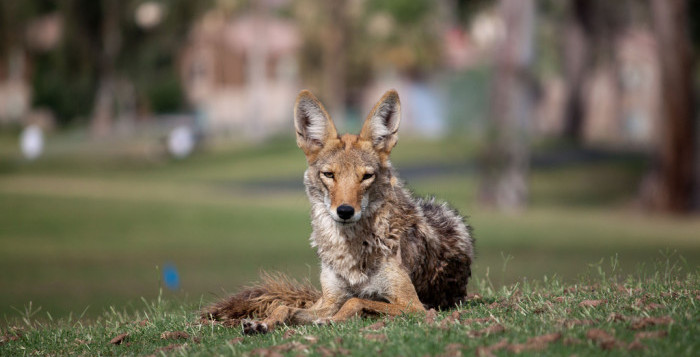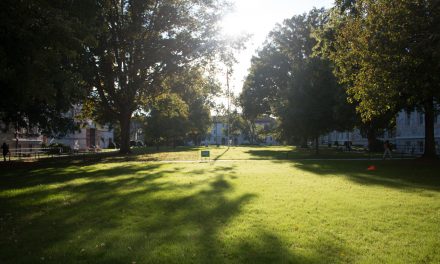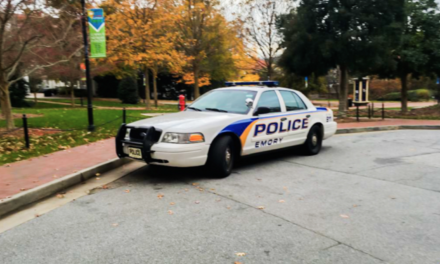
Photo by Dru Bloomfield on Flickr
A police department canine was killed by a pack of coyotes earlier this week in Conyers, Georgia. According to WSB-TV Atlanta, the patrol dog attacked the coyotes and sustained grave injuries before the dog’s handler could help him.
In response to recent coyote sightings in the metropolitan Atlanta area that have sparked interest in the predator, and Berry College biologist Christopher Mowry (‘94G) and Emory University ecologist Larry Wilson (‘92G) founded the Atlanta Coyote Project in October to better understand coyotes and how to coexist with them in the metro area.
Mowry explicitly stated that the goal of the Atlanta Coyote Project is simply to study coyotes in the metro area rather than combat number of coyotes.
Some questions Mowry and Wilson are exploring include: What are coyote territory sizes like? How big is their population? What are they eating? Where are they? What are their movement patterns like?
While the Atlanta Coyote Project is still in its infancy, Mowry and Wilson, who have worked extensively together, have started to gather information through almost 1,800 responses to a survey asking people in the metropolitan area to describe their interactions with coyotes.
“Coyotes get a bad rap, but there are things they can potentially be doing which are beneficial.” – Christopher Mowry
According to Wilson, one of the main things the Atlanta Coyote Project is trying to do is educate people. Wilson is hopeful that in the future they will do more than just surveys and implement some telemetry into their research.
“We are trying to take the public’s pulse right now regarding coyotes,” Mowry said. “We hope that these initial studies may guide us to do some field studies.”
According to Mowry, there is no question that the number of coyote sightings has increased anecdotally, but it is not a cause for alarm.
Mowry claims that the reason for the rise in sightings is due in part to the fact that humans wiped out the red wolf in the past 50 years, allowing coyotes to expand their territory.
“We as humans have disrupted the ecosystem by getting rid of the top predator, which was historically the red wolf,” Mowry said.
Mowry also claims that the coyote’s adaptability is one reason for the animal’s success.
“They eat just about anything,” Mowry said. “Their main diet is small mammals, but they will even eat fruits.”
Mowry claims that coyotes are now found throughout all of North America. However, they are largely unseen because they are active at times when humans are not as active. They can adapt pretty well to be extremely shy and secretive, Mowry explained.
“Coyotes are opportunistic and they will take advantage of road kill and food that people put outside to feed their animals,” Wilson said.
According to Wilson, the fear regarding coyotes attacking humans is overhyped.
“For some reason, there is this stigma about coyotes that they are pack animals, but they normally don’t go after people,” Wilson said. “If you want to look at an animal that attacks people, that is dogs.”
While there are definitely concerns regarding coyotes in urban areas, Mowry claims that there are some positive effects.
“Coyotes get a bad rap, but there are things they can potentially be doing which are beneficial,” Mowry said. “The coyote can help to keep smaller pest species under control including rats, squirrels and possums.”
“These animals are here, and we can not kill our way out of this,” Mowry said. “We cannot successfully exterminate them all, and we don’t want to do that because it often has unintended consequences.”
– By Brandon Fuhr, Senior Staff Writer
Digital Editor | Brandon Fuhr is a College junior from Briarcliff Manor, New York pursuing a triple major in art history, forensics, and nuclear neuroscience. Jokes. This kid is straight Business School material. When he isn't studying Corporate Finance, you can find him spinning, playing FIFA or at Chic-Fil-a (or all three at once). He is a Digital Editor for the Wheel and works to create digital features and ensures the website is fully functioning. More importantly, he is responsible for ensuring no Wheel editor goes home hungry. Orchestrating meals for a group of 20 college kids is no easy feat, but he strives to never disappoint.





